Are you ready to make your own infused oil or edibles but feel hung up on whether or not you need to add lecithin? Discover the two main reasons you may want to use lecithin in your cannabis cooking and learn when you should – and shouldn’t – use lecithin when making your own edibles at home.
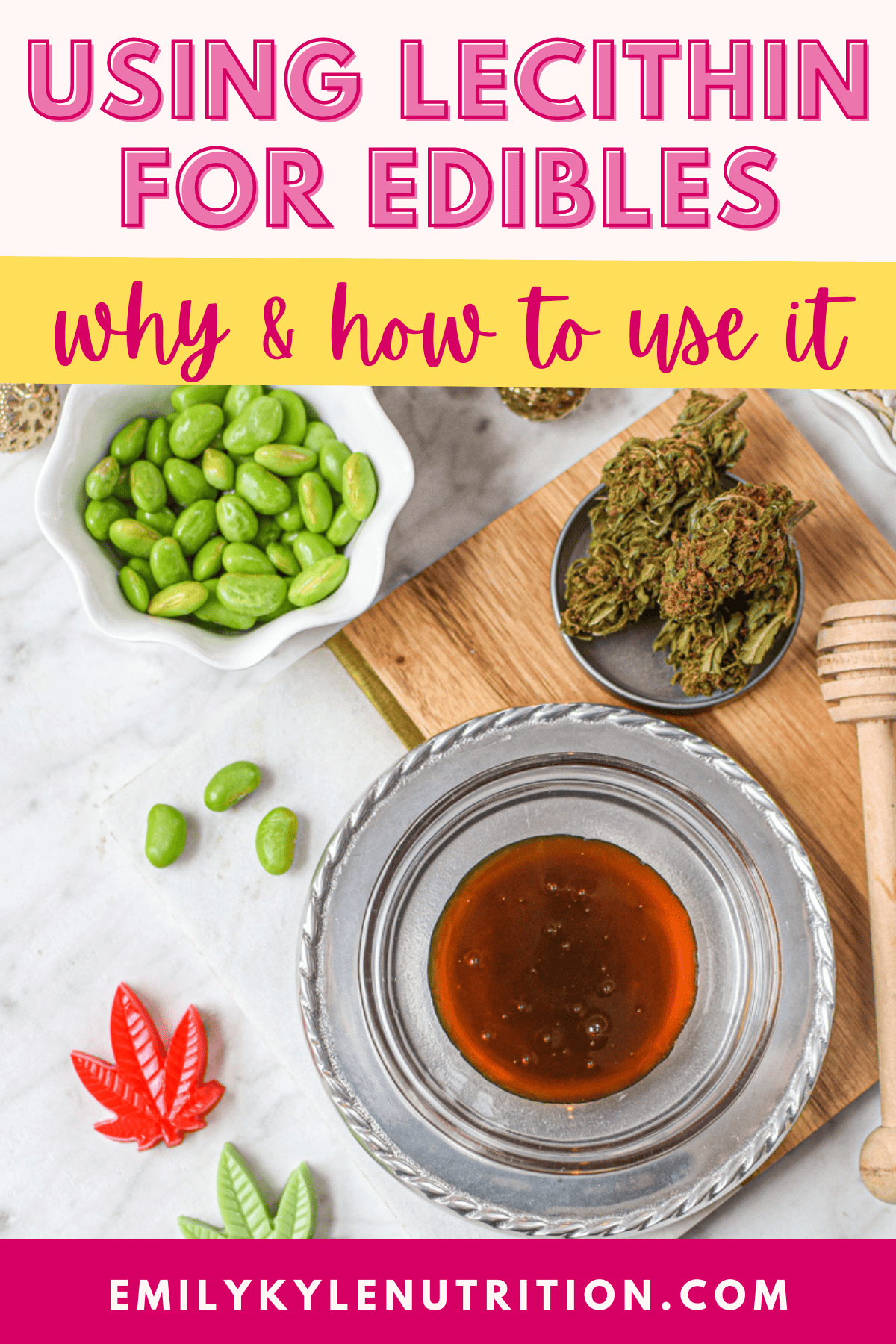
Table of Contents
Article Features
- Two good reasons to use lecithin in recipes
- Recommendations for where to buy lecithin
- Want to skip the hard work? Shop with me and have premium, high-quality cannabis products delivered directly to your door! Now shipping across the US.

Lecithin For Cannabis Edibles
I recently received this question from Mollie, a member of my Well With Cannabis Community:
“Lecithin in gummies…..is it necessary? Also, if I have it in powdered form, is there a way to mix it with water so I could use it in the recipe?”
A great question!
Here, we will take an in-depth look at lecithin, lecithin benefits, and when, and why you want to use it in your cannabis edibles.
We will also explore the different forms like powdered or liquid, sunflower or soy, and where to buy each kind.
What is Lecithin?
Lecithin is a type of fat essential for properly functioning cells in our body.
This natural phospholipid substance can be derived from soybeans, sunflowers, eggs, avocados, and more.
Lecithin can be found naturally within these foods or as a supplement purchased online or at a health food store.
Lecithin may be a new ingredient you’re not used to cooking with, but it can be an important staple ingredient for any cannabis kitchen.
Next, we will dive deep into why people use lecithin when making cannabis edibles and explore if adding lecithin is right for you and your needs.
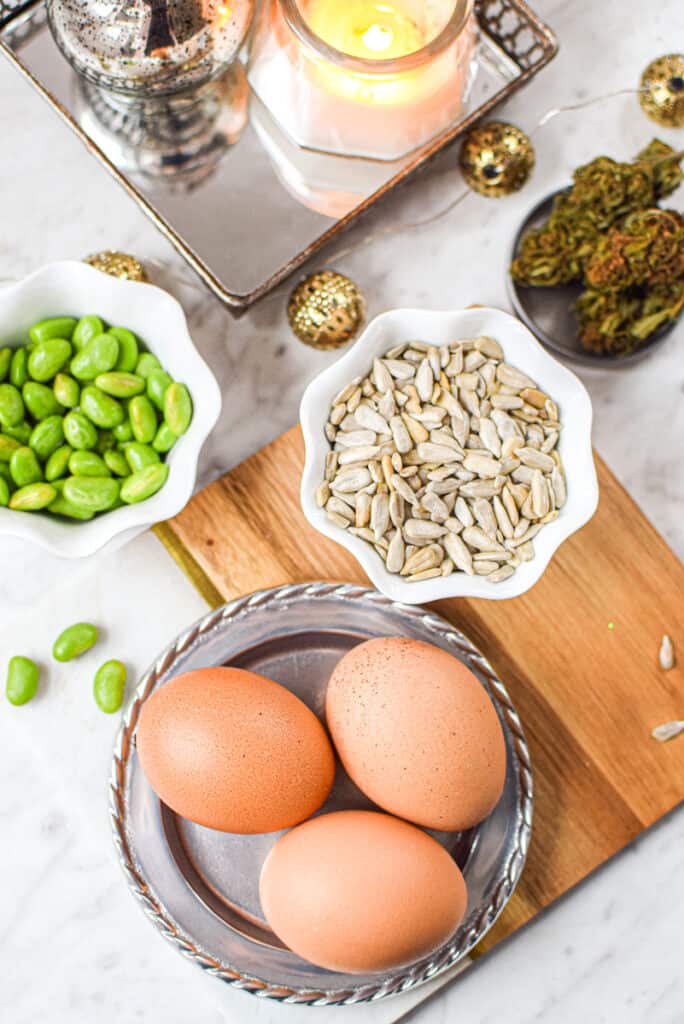
Why Use Lecithin in Edibles?
If you’re brand new to edibles, you may be unfamiliar with lecithin and why people use it in their at-home infusions and baked goods.
There are two primary reasons people use lecithin in edibles:
- To act as a stabilizer and emulsifier to combine oil and water for recipes like cannabis gummies
- To increase the potency of an infusion by increasing the bioavailability of cannabinoids in the body
Basic culinary science is the first reason for adding lecithin to edibles as an emulsifier.
Like water and oil, two opposing ingredients will never naturally combine without adding an emulsifier.
They will naturally separate over time, leaving a layer of water and a layer of oil.
Adding an emulsifier, like an ingredient containing lecithin, can help bond the two opposing ingredients together, preventing separation naturally.
Lecithin has the ability to combine oil in water AND water in oil, making it ideal for all infusions.
The second reason for adding lecithin to edibles is a theory that believes lecithin can increase the potency of an infusion by increasing the bioavailability of cannabinoids in the body.
It is believed that this increased bioavailability, defined as the “ability of a substance to be absorbed and used by the body,” will produce a more potent effect.
We will explore these reasons below so you know if using lecithin in your edibles is the right choice for you.
Reason #1
Emulsification, or to emulsify, is a process used in culinary science, in restaurants, by Chefs, and even at-home cooks.
By definition, “when you emulsify something, you mix it so thoroughly that it becomes an emulsion.”
In other words, it will no longer separate over time.
For example, in your home kitchen:
Keeping opposing ingredients together in certain recipes, like oil and vinegar in a salad dressing, is hard.
When you vigorously shake the dressing, the two ingredients combine, but when left to sit for some time, they separate back out again.
This is because there is nothing to hold the two ingredients together or emulsify them.
If you were to add another ingredient to your dressing that naturally contained lecithin, such as egg yolks, the dressing would remain emulsified and not separate.
When you make cannabis edibles at home, you will want to use lecithin as an emulsifier when making certain recipes.
The most common recipes that call for lecithin include:
- Cannabis gummies made with oil
- Cannabis lemon vinaigrette
- Hot drinks made with added cannabis oil, such as coffee, tea, and lattes
How Much Lecithin to Add
Most recipes that require lecithin will tell you the amount that is needed.
For example, this gummy recipe specifically calls for two teaspoons of lecithin for the entire recipe.
However, if the recipe does not call for a specific amount, adding one teaspoon of lecithin per 1 cup of liquid is a good rule.
You don’t need to add much to get the emulsification you need.
However, if separation continues, you can add more lecithin as needed.
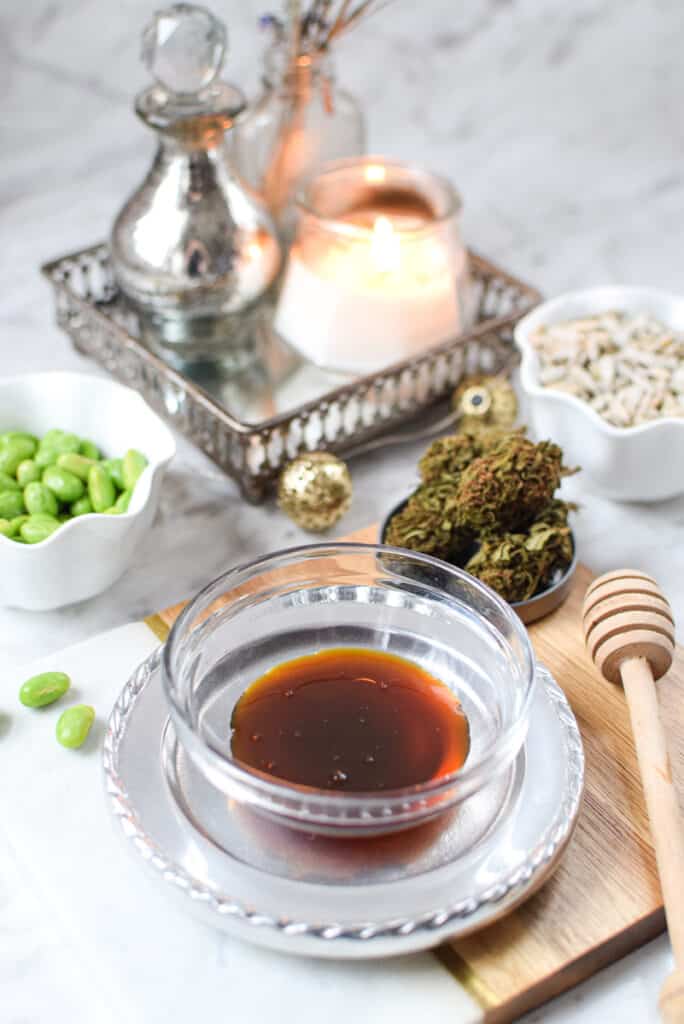
Warning: When NOT to Use Lecithin
There are a few members of my Well With Cannabis Community who have reported a common issue:
Accidentally adding lecithin to a cannabutter infusion made with water is a big disaster.
While I prefer the crockpot method for making cannabutter, you can also use the stovetop method or an infusion machine.
When cooking cannabutter on a stovetop, the temperature can fluctuate quite a bit, so folks add water to the pot.
The water helps regulate the butter’s temperature, preventing it from getting too hot and burning the butter, potentially denaturing the cannabinoids.
However, the water is removed and discarded at the end.
If you add water to your cannabutter infusion, do NOT add lecithin.
This will bind the water and butter together, resulting in a soupy mess and an undesirable end product.
If you’re using the stovetop method to make cannabutter or CBD butter, wait until all the water has been separated from the final product before stirring in the lecithin at the end.
Reason #2
Many cannabis cooks swear by adding lecithin to their oil-based infusions to make them stronger and more potent.
With this theory, it is believed that using lecithin will make valuable cannabinoids like CBD and THC more bioavailable or ready for use by the body, ultimately making the edible experience stronger.
While there is little scientific evidence to support this claim, there is ample anecdotal evidence of people who claim that adding lecithin makes all the difference in their overall experience.
Lecithin is a health food supplement, so it won’t hurt to experiment with it and see if it is right for you.
When experimenting with lecithin in oil infusions, adding it before heating or infusing it is common.
Again, a common recommendation is to add one teaspoon of lecithin per 1 cup of oil or butter.
Lecithin can be added to the following infusions:
- Coconut oil
- Olive oil
- Butter or ghee *not butter infusions that have water; see disclaimer above.
If you have already made your infusion, you can still add lecithin.
Gently heat up your infusion and add the lecithin, stirring until dissolved and well incorporated.
Different Forms of Lecithin
Many different forms of lecithin available on the market today can be found online or in health food stores.
The most common forms are soy or sunflower lecithin, found in powder, granulated, or liquid forms.
Generally, they all function pretty much the same and can be used interchangeably in recipes unless a specific form is otherwise called for.
Powdered or Granulated Lecithin
Lecithin powder, or granules, is a dry, processed version of lecithin that has been extracted from other ingredients, such as eggs or soy.
Most powdered or granulated lecithin is created as a by-product of making oil.
Lecithin granules or powders are typically less than 10% fat and have more hydrophilic properties, so they can easily dissolve in water.
The main benefit of powdered or granulated lecithin is that it allows you to use it without adding the flavor of eggs or sunflower to your recipes.
This is the powdered lecithin product I recommend.
Liquid Lecithin
Liquid lecithin is a less processed version of lecithin and is most often found in sunflower and soy versions.
Liquid lecithin contains about 20-30% fat and more lipophilic properties, making it great for high-fat content recipes and infusing oils.
While liquid lecithin is less processed, it does have a slight taste and odor that may turn off some people.
I prefer working with a liquid lecithin option rather than a powdered or granulated version, as it tends to mix in easier to various infusions and recipes, but ultimately, the choice is yours.
Sunflower vs. Soy
It is up to you whether you would like to choose sunflower lecithin over soy lecithin.
It mainly comes down to personal preference.
Choosing one over the other will not affect the quality or outcome of your recipes.
Where to Buy Lecithin
You can buy lecithin online if you can’t find it in your local health food store.
Below are a few of my favorite brands of lecithin used in our kitchen and the kitchen of our community members.
Liquid Sunflower Lecithin
This liquid lecithin is made using a mechanical, cold-pressed extraction process.
The careful control of the manufacturing process guarantees the vital nutrients in the lecithin remain preserved.
This sunflower lecithin is made from premium quality sunflower lecithin, free from gluten, soy, dairy, solvents, additives, and artificial ingredients.
Click to buy this liquid sunflower lecithin product from Amazon.
Powdered Sunflower Lecithin
This sunflower lecithin powder has phosphatidylcholine, the most abundant phospholipid in the cell membrane.
Lecithin aids in emulsifying fats, enabling them to be dispersed in water.
Add one tablespoon per cup of butter or oil to get the most out of your herbal infusion.
Important To Know
Like MCT-infused oil, some people anecdotally report that lecithin causes digestive issues.
These issues are typically minor digestive side effects, including stomach aches and diarrhea.
As with all things cannabis, always remember to start low and go slow for a more enjoyable experience.
Frequently Asked Questions
Most recipes that require lecithin will tell you the amount that is needed. However, if the recipe does not call for a specific amount, a good rule is to add one teaspoon of lecithin per 1 cup of oil or other liquid.
It depends on what recipe you are making. In most cases, it is optional, but it is necessary in cases like weed gummies.
They can be; however, this depends on many factors, including the potency of the cannabis flower you used and your unique endocannabinoid system. If you know the % of cannabinoids in your starting material, you can use the edible potency calculator to guesstimate the final number.
Yes, you will still reap many benefits of lecithin if you add it after completing your infusion process. Simply mix the lecithin into your infused oil. Note that you may need to heat this mixture slightly to get the ingredients to incorporate well.
Yes, if you are following my cannabis gummies with oil recipe, I recommend you still add the required 2 teaspoons of lecithin called for in the recipe, even if you already added some to your oil infusion.
I do have options for making gummies without lecithin; however, these recipes infuse the gummies with cannabis tinctures rather than oil. If you have these preparations on hand, you can make gummies with tincture or infuse store-bought gummies without having to use lecithin.
I have not found a great substitution for lecithin in gummies at this time. If you have a suggestion that works, please leave it in the comments below!
Conclusion
Ultimately, lecithin will likely become a staple ingredient in your cannabis kitchen.
Whether you’re trying to make the perfect gummy recipe or enjoy a healthy salad dressing, lecithin can help you achieve a better final product.
Adding lecithin to butter and oil infusions may also help to improve the bioavailability of the cannabinoids, lending to a more desirable experience overall.
If you are looking for even more information on lecithin, look no further than my Edibles Made Easy Course, which covers this topic in-depth.
More Guides You Will Love
Articles & How-To Guides
A Beginner’s Guide to Cannabis Edibles
Articles & How-To Guides
How to Make Edibles With Cannabis Concentrates
Articles & How-To Guides
How Long Do Edibles Stay In Your System?
Articles & How-To Guides

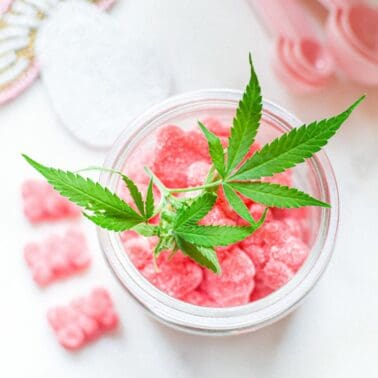
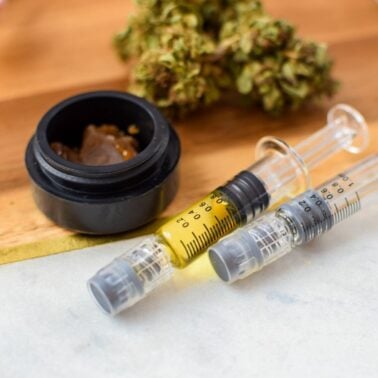

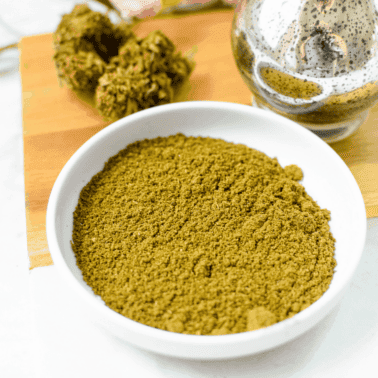
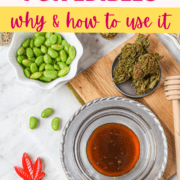








Hi Emily
I’m making gummies and have done everything-decarb, infused coconut oil and am ready to go! I put lecithin in the oil after it was strained. My question is do I add more when making the gummies or is that enough?
thank you your information is great
Best,Joan
Hello Joan! I always recommend adding the amount of lecithin called for in the gummy recipe, regardless of whether or not you have added it into your infusion first. I hope this helps!
I have the powder lecithin how much of that will I use in my coconut oil and do I dissolve it or just add it in the mason jars with the coconut oil and cannabis
Hello Roxanne, you can add 1/2-1 teaspoon per cup of oil. Put it directly in the mason jars with the oil and cannabis. Good luck 🙂
If I nanoemulsify, using only oil based ingredients, do I need to add a stabilizer? If so, would sunflower lecithin work
Hey Chris! So sorry, but I do not have experience with this to give you a good answer.
If I’ve used sunflower lecithin when ma6my infused coconut oil, do I still use some when making the gummies?
Hello Patricia! Yes, I would still add the same amount called for in the recipe 🙂
I’m dying to make hard candies with infused coconut oil. Would you recommend adding lecithin to the sugar mixture as it’s boiling to the hard candy stage or into the coconut oil to be added after it’s removed from the heat?
Hello Melissa! I’ve never made hard candies with infused coconut oil, so I am not 100% sure. I know from my experience making lollipops that the mixture hardens too quickly after removing from the heat to add anything else. It would probably be best to add it during the cooking process. I hope this helps, let us know how it turns out for you 🙂